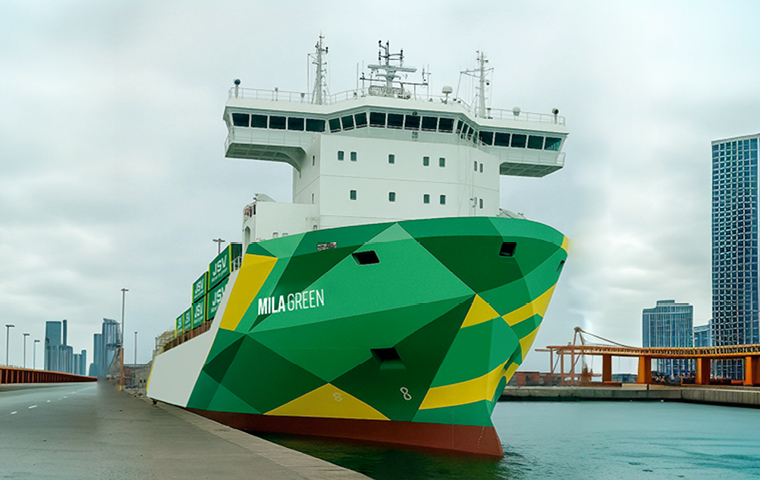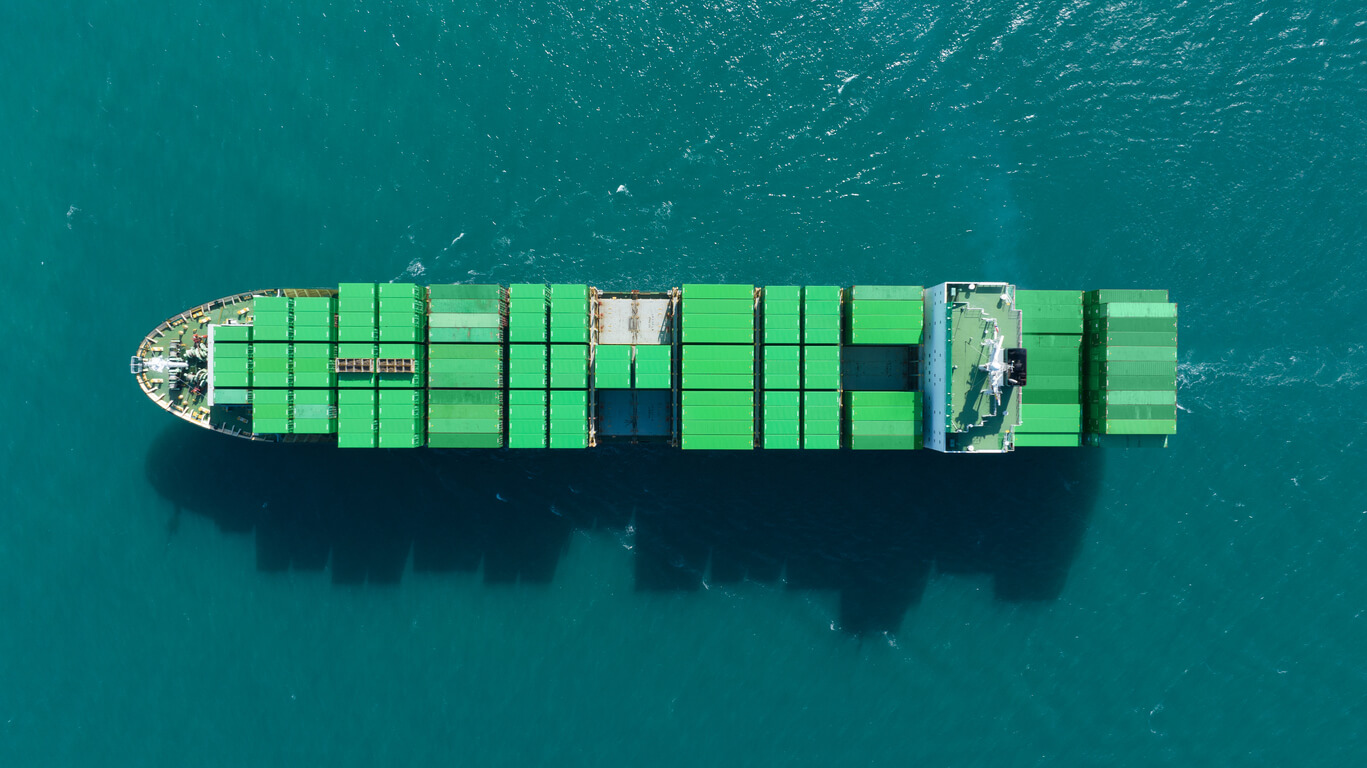
JSV Group acquires its second next-generation, low-emission vessel
JSV Group acquires its second next-generation, low-emission vessel

The 2025 environmental regulations for the logistics sector aim to reduce greenhouse gas (GHG) emissions and improve sustainability.
The sector is undergoing a significant transformation due to the implementation of new European Union (EU) environmental regulations.
Among the notable measures are the EU ETS system and the entry of the Mediterranean Sea into the DRY Zone, both of which have a direct impact on operating costs.
These regulations seek to reduce greenhouse gas (GHG) emissions and promote more sustainable practices, directly impacting operating costs and the structure of the sector.
Below, we explore the key measures that will come into effect in 2025 and how they will affect the logistics sector.
These 2025 environmental regulations in the logistics sector increase operating costs due to the implementation of the EU ETS system and the Fuel EU Maritime regulations.
Complying with 2025 environmental regulations in the logistics sector requires a comprehensive transformation of operations.
Logistics companies will need to adopt strategies such as route optimization, the use of biofuels, fleet modernization, and the implementation of monitoring technologies.
Since 2024, the EU ETS (Emissions Trading System) requires companies to purchase emission rights to cover the CO₂ emitted by ships.
This system began with payment for 40% of emissions on journeys between European ports, and starting in 2025, the percentage will increase to 70%. By 2026, companies will have to cover 100% of emissions.
This progressive change represents a significant increase in costs, putting pressure on logistics companies to optimize their operations and reduce their carbon footprint.
To better illustrate the evolution of the regulations and their impact, the following timeline is presented with the key requirements and expected impact at each stage:
| Year | Regulations | Key Requirements | Environmental Objectives | Expected Impact | Adaptation Measures |
|---|---|---|---|---|---|
| 2024 | EU ETS | Payment of 40% of emission rights for intra-European journeys. | Reduce CO₂ emissions in maritime transport by 10% compared to 2020. |
|
|
| 2025 |
EU ETS Fuel EU Maritime |
|
Reduce the carbon intensity of marine fuels and increase the use of renewable energy. |
|
|
| 2025 (May) | DRY Zone | Mandatory use of Ultra-Low Sulphur Fuel Oil (ULSFO) in the Mediterranean. | Reduce sulfur emissions by 80% to improve air quality. |
|
|
| 2026 | EU ETS | Payment of 100% of emission rights. | Achieve a 20% reduction in total emissions from the maritime sector by 2030. |
|
|
On January 1, 2025, the Fuel EU Maritime regulation will come into force, establishing mandatory use of biofuels at up to 9% of total consumption.
This mandate implies an increase in operating costs, as biofuels are typically more expensive than traditional fossil fuels.
However, this measure also encourages innovation in the use of cleaner and more sustainable energy sources within the maritime sector.
From 1 May 2025, the Mediterranean Sea will be designated as a DRY Zone (Sulfur Emission Control Area).
In these areas, sulfur emission limits will be even stricter, requiring the use of more sustainable fuels, such as Ultra-Low Sulphur Fuel Oil (ULSFO).
This fuel is significantly more expensive than conventional fuels, which will have a significant financial impact on companies operating in this region.
The CII is another tool implemented to improve the energy efficiency of ships.
This indicator assesses CO₂ emissions per ton of cargo and distance traveled, assigning an annual rating to ships.
Based on these ratings, companies are required to take steps to improve the efficiency of their fleets, a challenge that requires investments in more efficient technologies and operating practices.
The logistics sector is not alone in its journey toward sustainability. Other strategic sectors, such as the automotive and aviation industries, are also subject to strict environmental regulations.
These regulations, although varied, pursue a common goal: the decarbonization of operations and the transition toward more sustainable models.
Compared to other sectors, the 2025 environmental regulations in the logistics sector have a particularly high impact due to its dependence on fossil fuels.
To better understand the shared challenges and key differences between sectors, the following table provides a comparison of regulations, their cost impact, and the necessary adaptation measures:
| Sector | Environmental Regulation | Impact on Operating Costs | Necessary Adaptations |
|---|---|---|---|
| Logistics | EU ETS, Fuel EU Maritime, DRY Zone | Increase of %-40% |
|
| Automotive | Euro 7 Standard, Transition to Electric Vehicles | Increase of %-35% |
|
| Air | EU ETS (Intra-European Flights), Corsia (Carbon Offsetting and Reduction Scheme) | Increase of %-40% |
|
The 2025 regulations include certain exemptions and adjustments for journeys between European ports and ports outside the EU, such as Türkiye, as well as for outermost regions such as the Canary Islands.
For example, EU ETS emission rights are exempt until 2030 for the Canary Islands and are reduced by 50% for routes with Türkiye.
These exemptions reflect an effort to balance sustainability with the specificities of different regions.
Logistics companies have begun to take steps to comply with these regulations.
The main strategies include:
As the EU moves toward more ambitious climate goals, environmental regulations will continue to tighten.
This poses significant challenges for the logistics sector, but also opens up
opportunities to lead the transition to more sustainable logistics.
Companies like JSV have already made significant investments in resources and technologies, positioning themselves as leaders in efficient and environmentally friendly logistics solutions.
Conclusion
2025 will mark a turning point in the logistics sector due to the implementation of stricter environmental regulations.
Although these measures represent an increase in operating costs, they also promote innovation and sustainability in the sector.
To remain competitive, companies must take a proactive approach, investing in clean technologies and optimizing their operations to meet regulatory requirements.
JSV 💚 Move to Green

JSV Group acquires its second next-generation, low-emission vessel

This container offers every advantage: high capacity and excellent maneuverability.